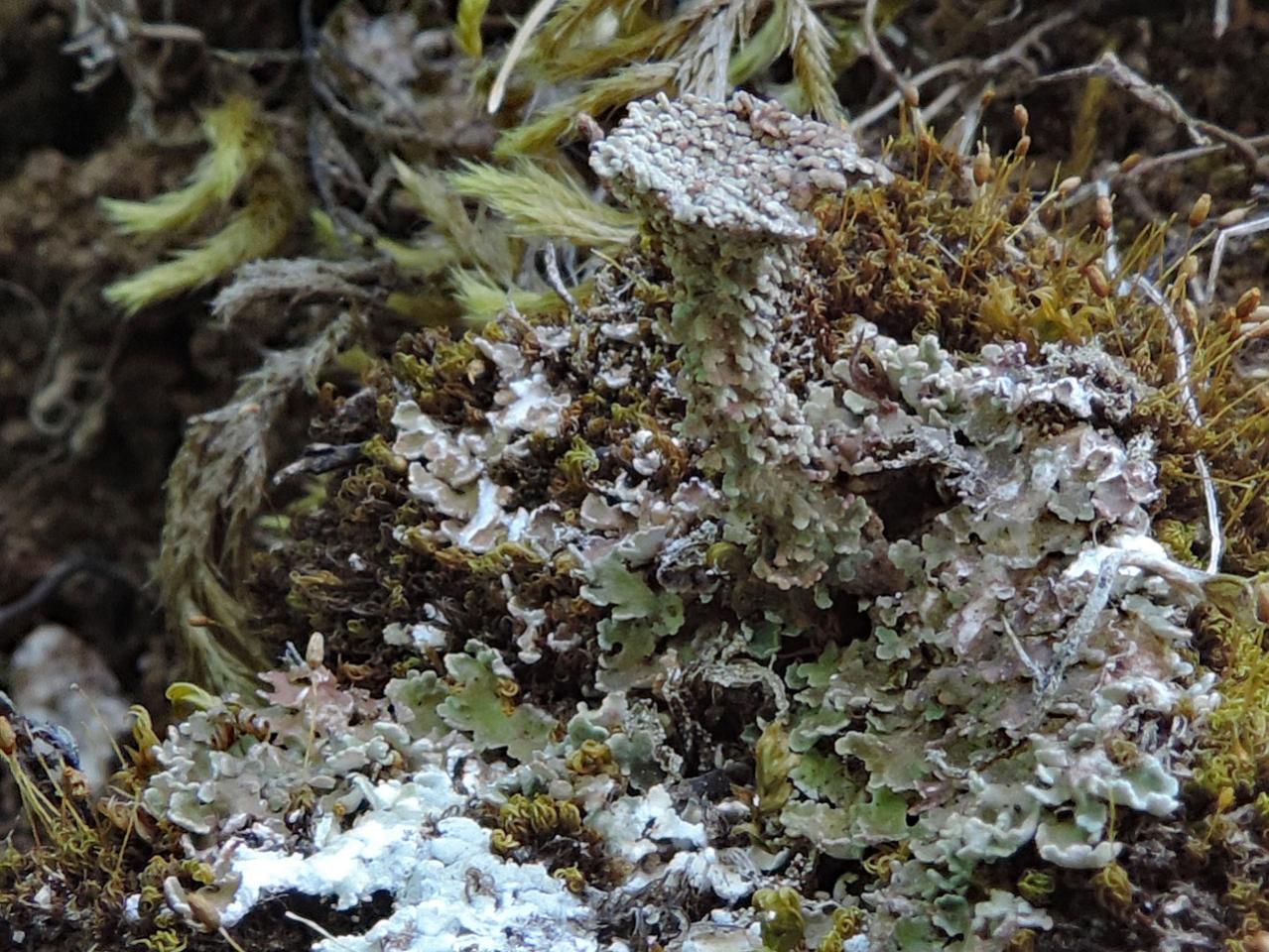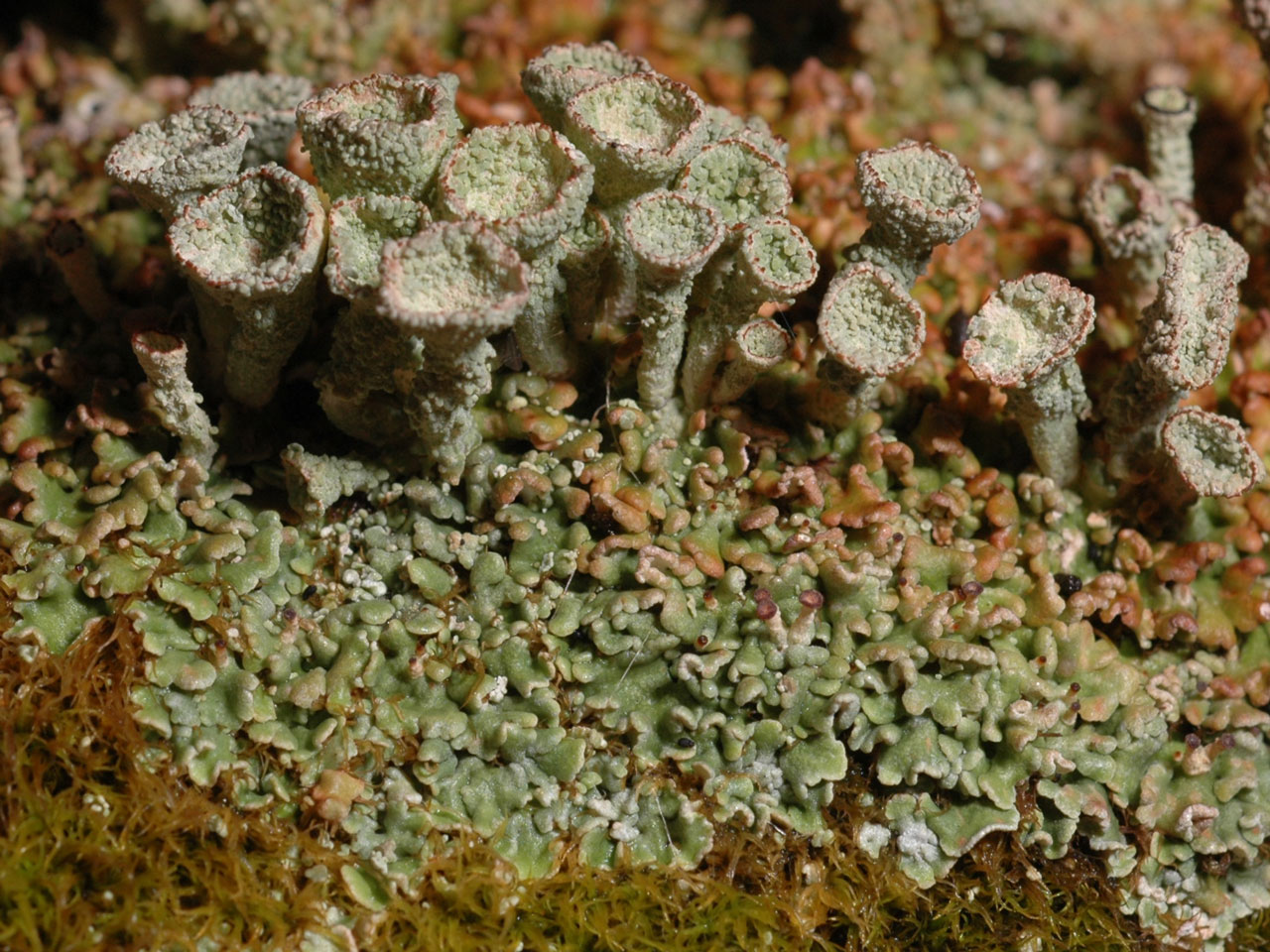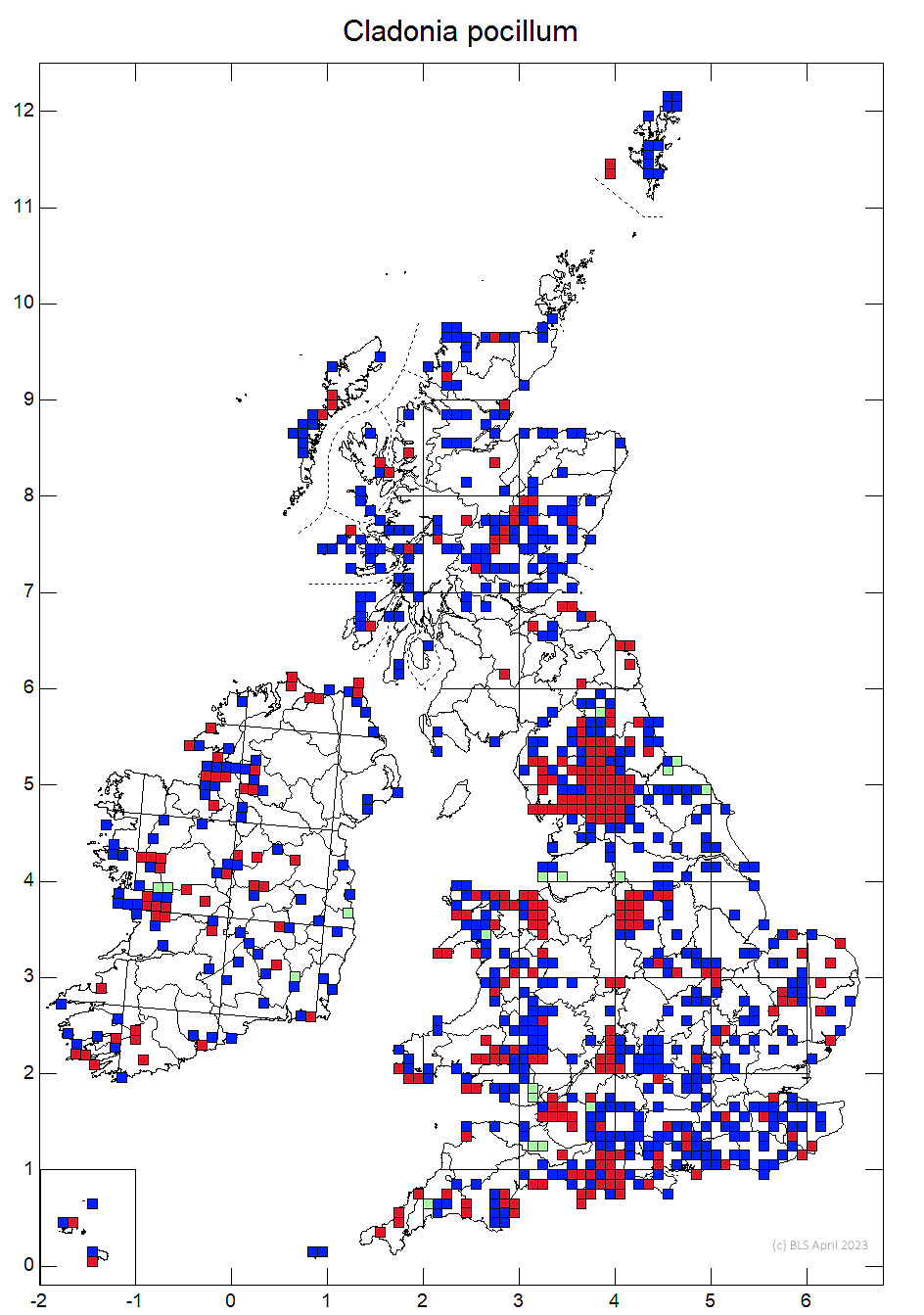Cladonia pocillum is a Pixie Cup with cups similar to C. pyxidata, with only corticate granules and no soredia or decorticate granules. The species are separated by the very different basal squamules, with C. pocillum having well developed, ± horizontally spreading, contiguous and overlapping brown-green basal squamules, which tend to radiate at the margins to form ± imbricate, compact rosettes. Cladonia pyxidata in contrast has typically rather small basal squamules, that are rounded or elongate, with few indentations, often becoming ± erect when abundant. The development of C. pocillum basal squamules is influenced by the roughness of the substate; they are best developed on open ground and more broken up when over growing robust mosses. The status of C. pocillum in relation to C. pyxidata is still unclear, although distinctive, it may be a calcicole ecotype of C. pyxidata.
Cladonia pocillum has likely been much confused with the schizidiate morph of Cladonia humilis, which grows on less calcareous substrates and has bright green-grey basal squamules with unturned ends showing the white underside, while C. pocillum has browner squamules with downturned ends.
Like Cladonia pyxidata, but with particularly well-developed, ± horizontally spreading, thick, contiguous and overlapping brownish-green basal squamules, which tend to radiate at the margins to form ± imbricate, compact rosettes, white below, softly pulverulent inside. The podetia are coarsely granular-corticate as in C. pyxidata. Thallus C–, K–, KC–, Pd+ red, UV– (fumarprotocetraric acid, rarely trace of atranorin).
Likely much confused with the schizidiate morph of Cladonia humilis, which grows on less calcareous substrates and has bright green-grey basal squamules with unturned ends showing the white underside, while Cladonia pocillum has browner squamules with downturned ends.
Considered by James (2009) possibly to be a calcicole ecotype of Cladonia pyxidata, but without apparent intermediates. That hypothesis was tested by Kotelko & Piercey-Normore (2010) using molecular methods, but only American collections were studied and Stenroos et al. (2019) considered that C. pyxidata s.l. was a polyphyletic entity. The two species are kept separate here, pending more detailed molecular and ecological analyses.
Mainly on sandy, calcareous soils, old mortar on walls, calcareous dunes and soils overlying calcareous rocks. This species is a common primary host for Diploschistes muscorum.

Common on calcareous substrates, throughout Britain and Ireland.
James, P.W. (2009). Cladonia. In Lichens of Great Britain and Ireland(Smith, C.W., Aptroot, A., Coppins, B.J., Fletcher, A., Gilbert, O.L., James, P.W. & Wolselsey, P.A. eds): 309–338. London: British Lichen Society.
Kotelko, R. & Piercey-Normore, M.D. (2010). Cladonia pyxidata and C. pocillum; genetic evidence to regard them as conspecific. Mycologia 102: 534–545.
Pino-Bodas, R., Sanderson, N., Cannon, P., Aptroot, A., Coppins, B., Orange, A. & Simkin, J. (2021). Lecanorales: Cladoniaceae, including the genera Cladonia, Pilophorus and Pycnothelia. Revisions of British and Irish Lichens 19: 1-45. Link
Stenroos, S., Pino-Bodas, R., Hyvonen, J., Lumbsch, H.T. & Ahti, T. (2019). Phylogeny of the family Cladoniaceae (Lecanoromycetes, Ascomycota) based on sequences of multiple loci. Cladistics 35: 351–389
Text by N A Sanderson, based Pino-Bodas et al (2021)


